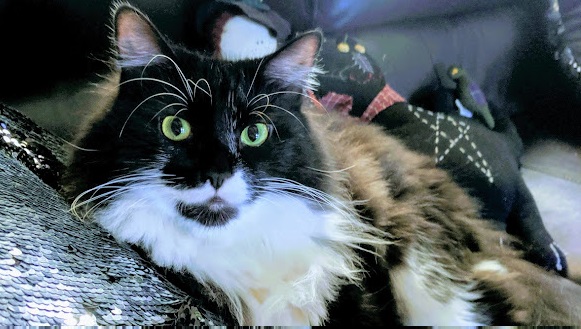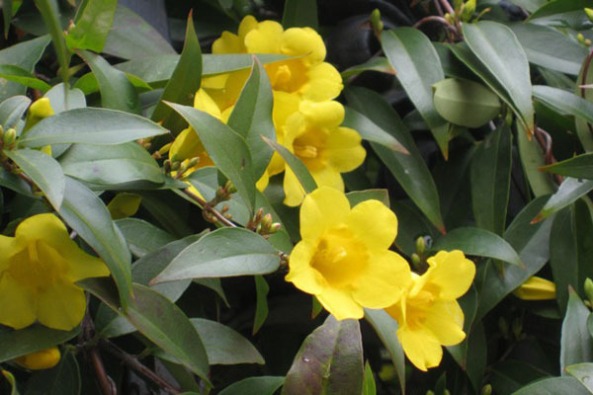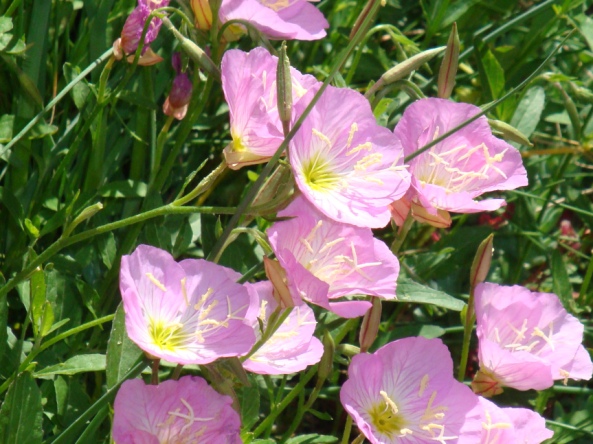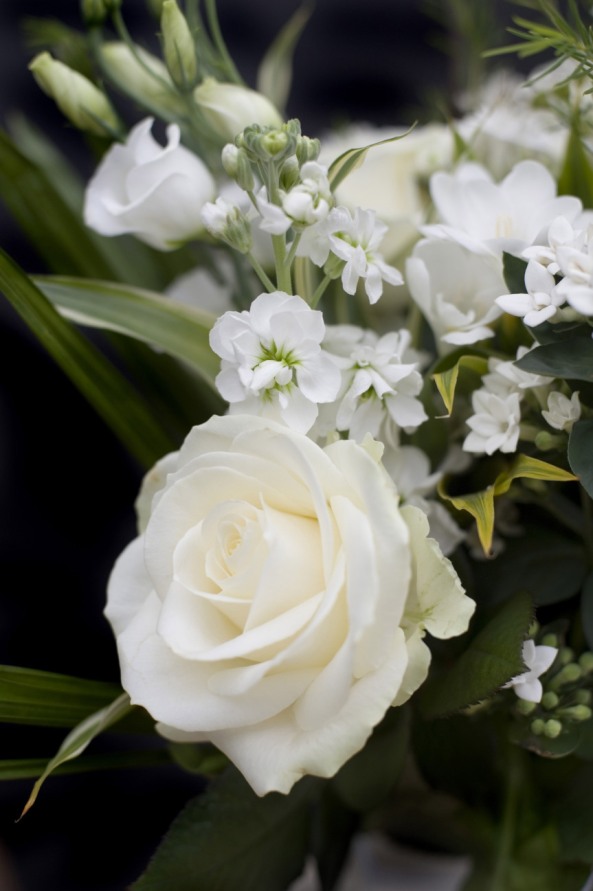
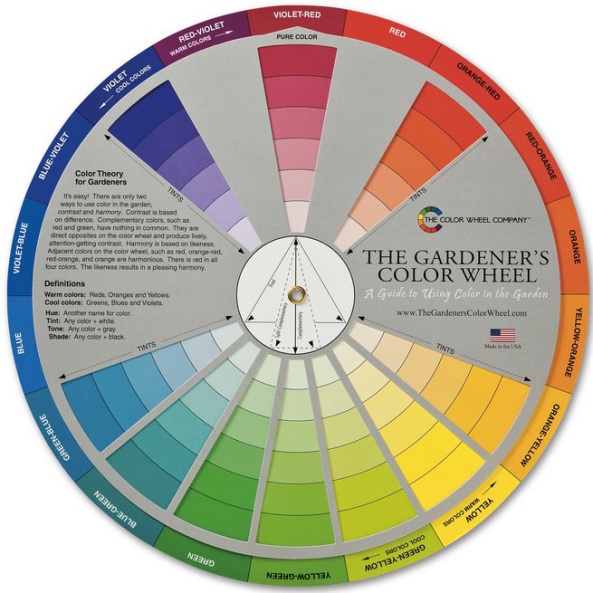 Consider the emotions evoked by different colors when planning a flower garden. Bright colors should be placed toward the front of the border, allowing the softer and more subtle shades to recede into the background. Use colors such as reds, oranges, and bright yellows in areas where the activity will occur, near a children’s play yard, or by a swimming pool. Save softer colors for quiet areas-a bench along a woodland path, perhaps.
Consider the emotions evoked by different colors when planning a flower garden. Bright colors should be placed toward the front of the border, allowing the softer and more subtle shades to recede into the background. Use colors such as reds, oranges, and bright yellows in areas where the activity will occur, near a children’s play yard, or by a swimming pool. Save softer colors for quiet areas-a bench along a woodland path, perhaps.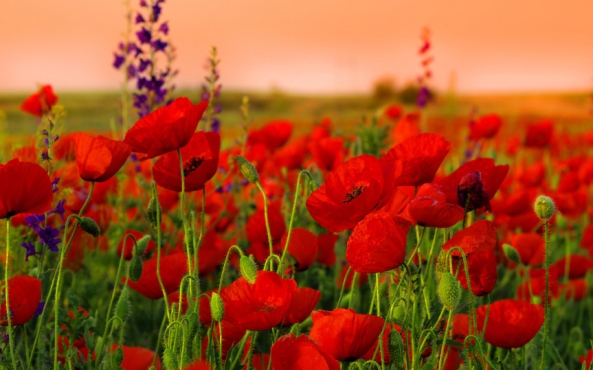 Red Suggests, Passion, Impulse, Enthusiasm
Red Suggests, Passion, Impulse, Enthusiasm
Choose a great deal of red for your gardens and you are probably an extrovert and impossible to ignore. You are enthusiastic and prone to impulsive moods and actions. Red is such a passionate color that it must be used carefully in the garden, perhaps as an accent or as a motif in a large area. Red blends well with white and yellow flowers or gray foliage plants. Without the benefit of other colored blossoms, red flowers look wonderful against a background of dark evergreens. Fences or walls in a red garden should be painted a stark white. Love red and you might choose some of the following plants for your garden: canna lily, chrysanthemum, clematis, dahlia, dianthus, flax, geum, gladiolus, hollyhock, larkspur {red}, Maltese cross, nasturtium, Oriental poppy, peony, petunia, phlox, potentilla, red-hot poker, rose, salvia, snapdragon, stock, tulip, yarrow, zinnia.
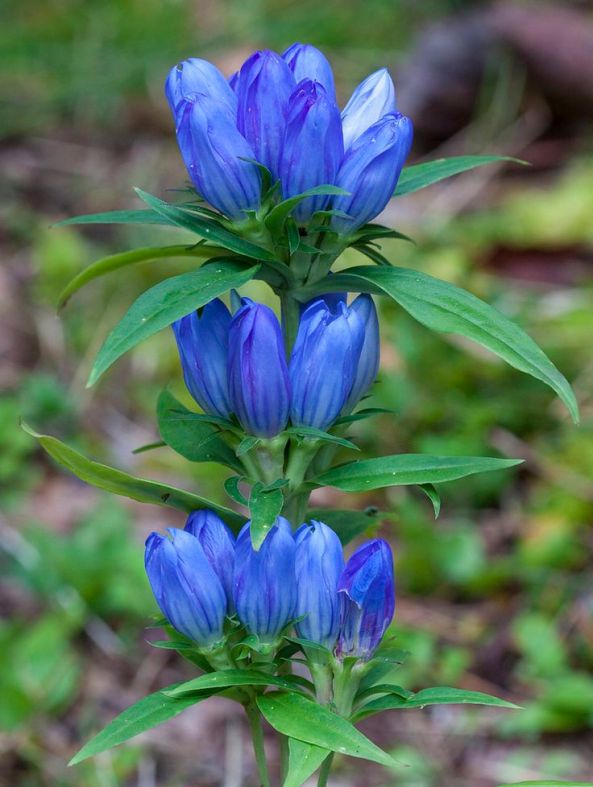 Blue’ Introspection, Sensitivity Favors Blue
Blue’ Introspection, Sensitivity Favors Blue
Gardeners seem to be always looking for blue garden flowers. Not only does blue look spectacular outdoors, but as cut flowers, shades of blue and violet add great beauty indoors. Blue is most often chosen as a favorite color. A preference for blue indicates introspection, sensitivity, and conservatism. You tend to weigh your options carefully and are cautious about taking action. In the garden, blue is easy to blend with other colors. It goes particularly well with yellow, white, or pale gray foliage. Alone, however, it will get lost against a backdrop of evergreens. Blue flowers to include within the garden are: ageratum, aster, balloon flower, bellflower, columbine, delphinium, flax {blue}, for-get-me-not, gentian, glory of the snow, grape hyacinth, hyacinth, iris, lupine, morning glory, petunia, phlox, primrose, sage {blue}, scilla, vinca, violet.
Yellow’ Imagination, Intellect, Ideals
Those who love yellow will find that it contrasts well with red or blue. Many consider blue and yellow the most beautiful of all color combinations in the garden. If you love yellow, you have a great imagination and a tremendous drive for self-fulfillment. Yellow is often chosen by intellects and idealists. You make a good confidant and a true friend. Flowers in shades of yellow are abundant. Among the most popular are: allium, basket of gold, calendula, canna lily, chrysanthemum, clematis, columbine, coreopsis, cosmos, dahlia, daisy, daylily, gaillardia, gazania, Gerber daisy, geum, gladiolus, globe flower, hyacinth, iris, marigold, narcissus, nasturtium, nicotiana, pansy, petunia, portulaca, potentilla, primrose, rose, Saint John’s wort, sedum, snapdragon, strawflower, sunflower, tulip, violet, wallflower, winter jasmine, yarrow, zinnia.
Pink’ Charm E~Warmth in Personality
Many consider pink the finest of all garden colors. Lacking the passion of red but warmer than the cool blues, pink seems to take the best characteristics of all other colors. A love of pink indicates wealth, a good position in society, and a character full of charm and warmth. Those who love pink are usually pampered, loved, and cared for. In the garden pink flowers can be successfully blended with pale blue or pale yellow flowers or plants with pale gray foliage. Architectural features such as fences or walls should be light gray or white. For the “pink of perfection” plant: ageratum, anemone, aster, astilbe, baby’s breath, balloon flower, begonia, bleeding heart, candytuft, Christmas rose, chrysanthemum, clematis, cleome, colchicum, coral bells, cornflower, cosmos, dahlia, daylily, foxglove, geranium, gladiolus, hibiscus, hollyhock, impatiens, morning glory, peony, pink, poppy, purple coneflower, scilla, sedum, snapdragon, spiderwort, stock, sweet pea, tulip, vinca, yarrow, zinnia.
White for a Simple Life. Naivete’ E~Innocence
White is the great ameliorator in the garden. It often comes in two colors that would otherwise clash. White flowers are often best enjoyed in the evening, for their fragrance is usually strongest then, and they seem to illuminate the garden. It is difficult to go wrong with white in the garden. It blends well with red, blue, purple, pinks, and yellows. White flowers look most spectacular by themselves against a backdrop of dark evergreen. People seldom choose white as a favorite color. Those who do generally enjoy a simple life. A preference for white indicates naivete and innocence; alyssum, aster, astilbe, baby’s breath, balloon flower, begonia, bleeding heart, calla lily, candytuft, Christmas rose, chrysanthemum, clematis, cleome, cosmos, crocus, dahlia, daisy, four-o’clock, gazania, geranium, gladiolus, glory of the snow, grape hyacinth, hollyhock, hosta, hyacinth, impatiens, iris, jasmine, lily, lily of the valley, narcissus, pansy, peony, petunia, phlox, pink, poppy, primrose, rose, scilla, snapdragon, spiderwort, stock, tulip, vinca, wisteria, zinnia.
Source: Garden Color
